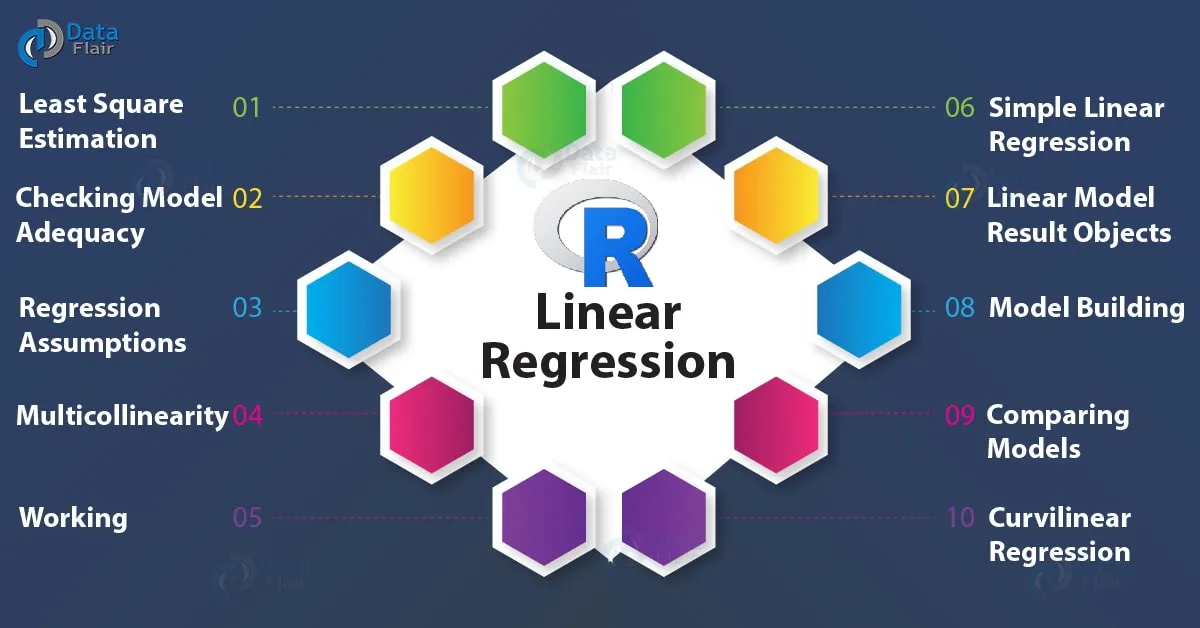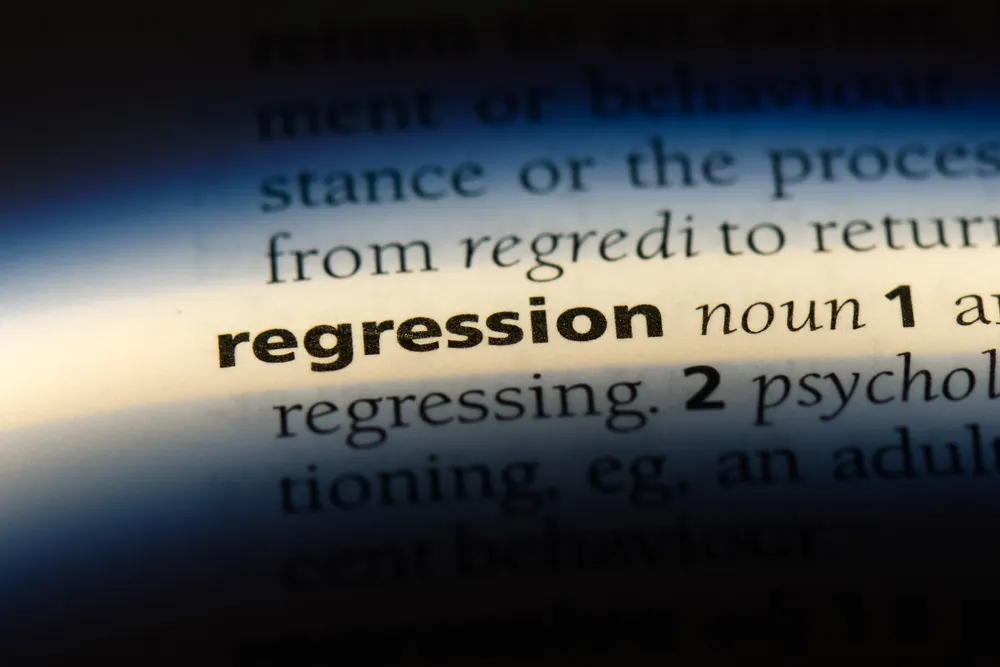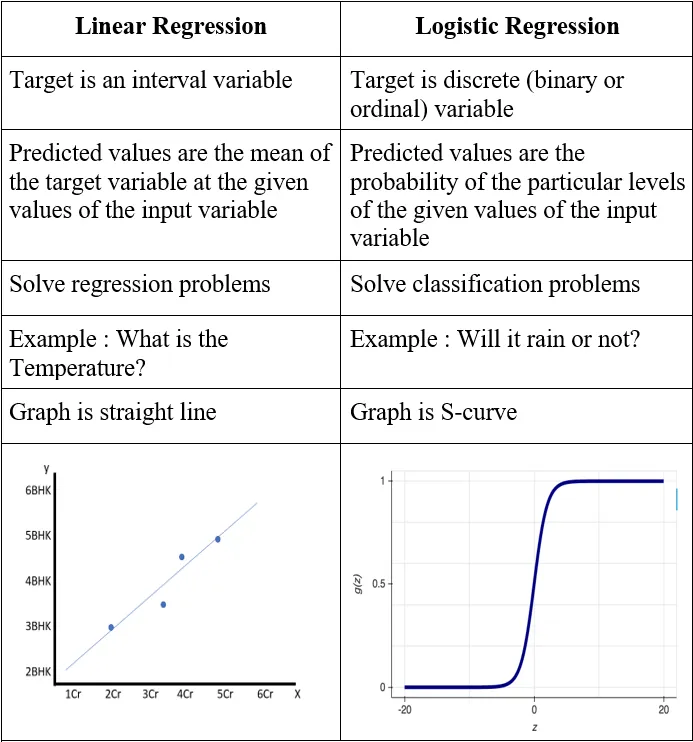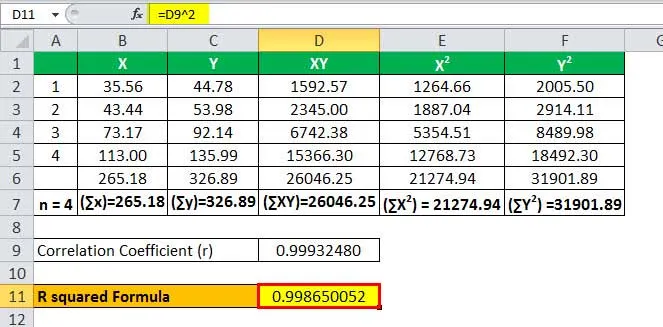Linear Regression Maths
In this blog I
will be writing about Linear Regression, that is, what is linear regression,
finding best fit regression line, checking goodness of fit etc.
So without any
further due lets get started.
Before we dive into Linear regression lets
understand what is regression and what are its use cases.
What is Regression?
Regression is a statistical method
used in finance, investing, and other disciplines that attempts to determine
the strength and character of the relationship between one dependent variable
(usually denoted by Y) and a series of other variables (known as independent
variables).
Uses of Regression
Well there are plenty of use cases for regression but I will mention 3 major applications.
1. Determining the strength of predictors
2. Forecasting an effect
3. Trend forecasting
Linear vs Logistic
regression
What is Linear
Regression?
Linear regression analysis is the most widely used of all statistical techniques: it is the study of linear, additive relationships between variables. Let Y denote the “dependent” variable whose values you wish to predict, and let X1, …,Xk denote the “independent” variables from which you wish to predict it, with the value of variable Xi in period t (or in row t of the data set) denoted by Xit. Then the equation for computing the predicted value of Yt is:
Where Linear Regression is used?
1. Estimating Trends and Sales Estimates
2. Analyzing the impact of Price Changes
3. Assessment of risk in financial services and insurance
domain
In this blog I’m going to focus
only on variable selection for Linear Regression, explaining three approaches
which can be used:
·
Best Subset Selection
·
Forward Stepwise Selection
·
Backward Stepwise Selection
This approach tries all the
possible 2^p combinations of inputs with the following idea. It starts from the
null model, containing only the intercept:
Next, it trains other 6 models with
all the possible combinations of couples of variables and then pick, again the
one with lowest RSS or highest R²:
Then, we are left with 4 selected
model with, respectively, 1, 2, 3 and 4 variables. The final step is picking
the best one using metrics as Cross-Validation or
adjusted error metric (adjusted R², AIC, BIC…), in order to take into
consideration the bias-variance
trade off.
2. Forward Stepwise Selection
With forward selection, we follow a
similar procedure as before, with one important difference: we keep trace of
the selected model at each step and only add variables, one at the time, to
that selected model, rather that estimate one new model every time.
So we start again from the null
model and repeat the first step above, that is training 4 models with 1
variable each and pick the best one:
3. Backward Stepwise Selection
The idea of this approach is
similar to the Forward Selection, but in reverse order. Indeed, rather than
starting from the null model, we start from the full model and remove one
variable at the time, keeping trace of the previously selected model.
So, moving from the full model:
The main difference between Forward
and Backward approach is that the former can deal with task where p>n (it
simply adds a stopping rule when p=n), while the latter cannot, since the full
model implies p>n.
Now to let us know about internal theory to built our
Linear regression Model
Line of Best Fit
A Line of best
fit is a straight line that represents the best approximation of
a scatter plot of data points. It is used to study the nature of the
relationship between those points.
The equation to find the best
fitting line is:
Y` = bX + A
where, Y` denotes the predicted
value , b denotes the slope of the line ,
X denotes the independent variable,
A is the Y intercept
Usually, the apparent predicted
line of best fit may not be perfectly correct, meaning it will have “prediction
errors” or “residual errors”.
Prediction or Residual error is
nothing but the difference between the actual value and the predicted value for
any data point. In general, when we use Y` = bX +A to predict the actual
response Y`, we make a prediction
error (or residual error) of size:
E = Y — Y`
where, E denotes the prediction
error or residual error
Y` denotes the predicted value
Y denotes the actual value
A line that fits the data “ best” will be one for which the prediction errors (one for each data point) are as small as possible.
The below diagram depicts the
simple representation with all the above discussed values:
What is R-Square?
1. R-squared value is a statistical measure of how close
the data are to the fitted regression line
2. It is also known as coefficient
of determination, or the coefficient
of multiple determination.
Formula
The R-squared formula is calculated
by dividing the sum of the first errors by the sum of the second errors and
subtracting the derivation from 1. Here’s what the r-squared equation looks
like.
R-squared = 1 —
(First Sum of Errors / Second Sum of Errors)
First, you use the line of best fit
equation to predict y values on the chart based on the corresponding x values.
Once the line of best fit is in place, analysts can create an error squared
equation to keep the errors within a relevant range. Once you have a list of
errors, you can add them up and run them through the R-squared formula.
Example
Consider the following two
variables x and y, you are required to calculate the R Squared in Regression.
Using the above-mentioned formula,
we need to first calculate
the correlation coefficient.
Let’s now input the values in the
formula to arrive at the figure.
r = 17,501.06 / 17,512.88
The Correlation Coefficient will be-
So, the calculation will be as
follows,
R Squared Formula in Regression
I tried to provide all the important information on
getting started with Linear Regression and its implementation. I hope you will find something useful here. Thank
you for reading till the end.























Comments
Post a Comment